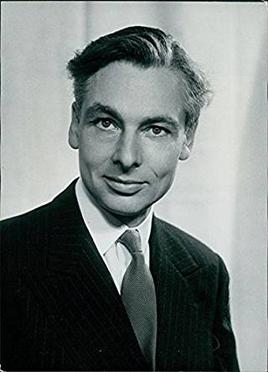Richard Sharples facts for kids
Quick facts for kids
Richard Sharples
|
|
|---|---|

Richard Sharples in 1959
|
|
| Governor of Bermuda | |
| In office 1972 – 10 March 1973 |
|
| Monarch | Elizabeth II |
| Preceded by | Lord Martonmere |
| Succeeded by | Sir Edwin Leather |
| Member of Parliament for Sutton and Cheam |
|
| In office 4 November 1954 – 31 October 1972 |
|
| Preceded by | Sydney Marshall |
| Succeeded by | Graham Tope |
| Personal details | |
| Born | 6 August 1916 England |
| Died | 10 March 1973 (aged 56) Hamilton, Bermuda |
| Cause of death | Assassination |
| Resting place | St. Peter's Church, St. George's |
| Spouse |
Pamela Newall
(m. 1946) |
| Children | 4 |
| Alma mater | Royal Military College, Sandhurst |
| Military service | |
| Allegiance | |
| Branch/service | |
| Years of service | 1936-1953 |
| Rank | |
| Unit | Welsh Guards |
| Battles/wars | Second World War |
Sir Richard Christopher Sharples (born August 6, 1916 – died March 10, 1973) was an important British politician. He served as the Governor of Bermuda, which is like being the leader of the island. Sadly, he was killed in 1973 by a group linked to the Black Power movement. Before becoming Governor, he was a high-ranking officer in the army and a minister in the British government. His death led to the last executions carried out under British rule in 1977.
Contents
Sir Richard Sharples' Early Life and Career
Sir Richard Sharples began his military career in 1936. He graduated from the Royal Military College, Sandhurst, a famous army school. He then joined the Welsh Guards, a part of the British Army.
Military Service During World War II
During the Second World War, Sir Richard served in France and Italy. He showed great bravery and rose through the ranks. By 1953, he had become a lieutenant colonel. After his military service, he left the army.
Family Life and Entry into Politics
In 1946, Sir Richard married Pamela Newall. They had two sons and two daughters. The family loved yachting, which helped him become good friends with Edward Heath, who later became Prime Minister. In 1954, Sir Richard was elected as a Conservative Member of Parliament for Sutton and Cheam. This meant he represented that area in the British government.
Serving as a Government Minister
After the 1970 general election, Sir Richard became a Minister of State at the Home Office. This is an important role in the government, dealing with law and order. In 1972, he left his position as a Member of Parliament to become the Governor of Bermuda.
The Assassination of Governor Sharples
On March 10, 1973, Governor Sharples was killed outside Government House in Bermuda. He had just finished dinner with guests and decided to take a walk. He was with his large dog, Horsa, and his assistant, Captain Hugh Sayers. The two men and the dog were attacked and shot near the Governor's home.
Immediate Aftermath of the Attack
After the assassination, the British Navy ship HMS Sirius helped transport the bodies. They were taken from Hamilton to St. George's. Sir Richard Sharples was buried in the graveyard at St Peter's Church on March 16, 1973. Captain Sayers and the dog, Horsa, were buried with him.
British soldiers were in Bermuda for training when the attack happened. They were called in to help the police. These soldiers helped protect government buildings and important people. They also assisted the Bermuda Police.
The Investigation and Arrests
The police started a large search and investigation. Seven months later, a man named Erskine Durrant "Buck" Burrows was arrested. He admitted to shooting Governor Sharples and Captain Sayers. He was also found guilty of killing the Bermuda Police commissioner George Duckett in 1972. Burrows also killed two people at a supermarket in 1973.
Burrows explained his reasons for the killings in a written statement. He said he wanted to make people, especially black people, aware of the "evilness" of the colonial system. He also wanted to show that leaders were ordinary people.
Another person, Larry Tacklyn, was found not guilty of killing Sharples and Sayers. However, he was found guilty of the supermarket murders.
Executions and Riots
Both Erskine Burrows and Larry Tacklyn were executed on December 2, 1977, at Casemates Prison. They were the last people to be executed under British rule anywhere in the world.
After the executions, there were three days of rioting in Bermuda. The local army, the Bermuda Regiment, was too small to handle the situation. So, soldiers from the British Army were sent to help. The damage from the riots was estimated to be about $2 million.
Awards and Recognitions
Sir Richard Sharples received several awards for his bravery and service:
- In 1940, he was given the Military Cross (MC) for his "gallant conduct" during a battle.
- In 1945, he was mentioned in official reports for his service in Italy.
- In 1946, he received the Silver Star from the United States Armed Forces. This is a very high military award for bravery in combat.
- In 1953, he was made an Officer of the Order of the British Empire (OBE).
- In 1972, he was knighted as a Knight Commander of the Order of St Michael and St George. This happened after he was appointed Governor of Bermuda.
Images for kids




